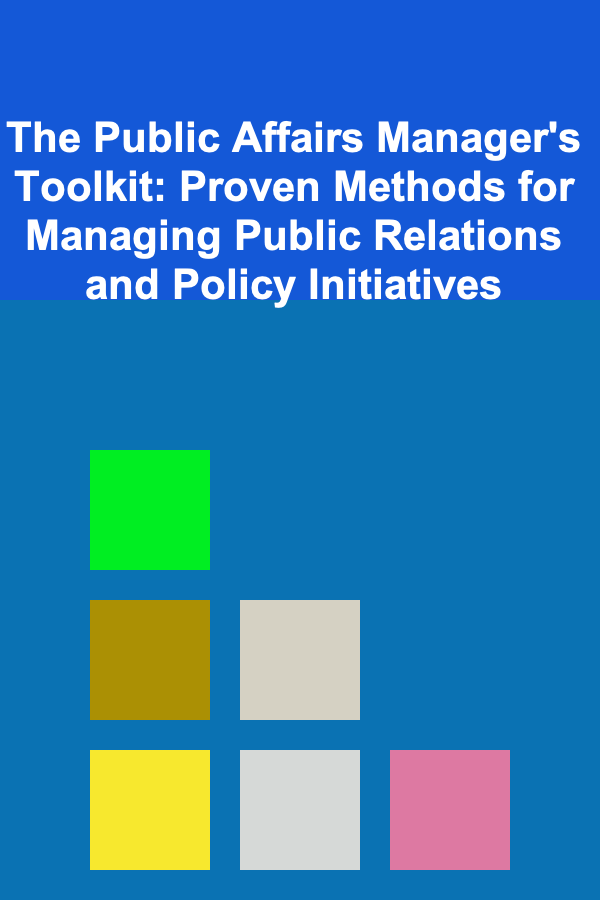
10 Tips for a Job Application Checklist for Executive Roles
ebook include PDF & Audio bundle (Micro Guide)
$12.99$8.99
Limited Time Offer! Order within the next:

When applying for an executive role, the competition is fierce. These high-level positions require a unique blend of experience, skills, leadership ability, and strategic vision. The application process is not only about showcasing your qualifications but also about presenting yourself as the perfect fit for a leadership position. A well-prepared job application can set you apart from other candidates and make a strong case for why you should be the next executive at the company.
In this article, we'll cover ten essential tips for a job application checklist for executive roles. By following this guide, you'll be able to create a compelling application that reflects your expertise and enhances your chances of securing the position.
Tailor Your Resume to Highlight Leadership Experience
One of the most critical elements of your job application is your resume. For executive roles, it's essential that your resume clearly demonstrates your leadership experience and strategic impact.
Focus on Relevant Experience:
- Leadership Roles: Emphasize roles where you led teams, departments, or large projects. Highlight the scope of your responsibility and the outcomes of your leadership.
- Strategic Vision: Showcase your ability to develop and execute strategies that have led to measurable results. This could include increasing revenue, improving efficiency, or driving innovation.
- Impact Metrics: Use specific numbers, percentages, or other measurable metrics to demonstrate your success. For example, "Led a team of 50+ employees, resulting in a 30% increase in revenue year-over-year."
Keep It Concise:
While your executive resume should reflect your experience and expertise, it's also important to keep it concise. Avoid overwhelming the reader with every detail of your career. Focus on the most relevant accomplishments and experiences that align with the role you're applying for.
Craft a Compelling Executive Summary
An executive summary, often placed at the top of your resume, is a short and powerful introduction that sets the tone for the rest of the document. This section should quickly communicate your key strengths, experience, and leadership abilities.
Key Points to Include:
- Leadership Philosophy: Briefly state your approach to leadership, such as your commitment to collaboration, innovation, or results-driven performance.
- Unique Selling Points: Highlight what sets you apart from other candidates, such as specialized expertise, successful projects, or industry-specific knowledge.
- Career Achievements: Mention any high-level accomplishments, such as turning around underperforming departments, leading mergers, or growing a business.
Keep It Focused:
The executive summary should be no more than three or four sentences. It should capture your most impressive achievements while providing a snapshot of your leadership capabilities.
Demonstrate Strategic Thinking
As an executive, strategic thinking is one of the key qualities that will set you apart from other applicants. You need to demonstrate that you can think long-term, understand industry trends, and align your team's actions with the company's vision.
How to Demonstrate Strategic Thinking:
- Include Strategic Initiatives: Mention any initiatives where you've played a role in shaping the direction of a company or department. This could include new product launches, market expansions, or organizational restructuring.
- Problem-Solving: Discuss how you've solved complex business problems with long-term solutions. Focus on times when you've had to pivot or adjust strategies due to changing market conditions.
- Vision Alignment: Show how your leadership aligns with the company's vision. Explain how you've helped organizations achieve their long-term goals.
Use Case Studies:
If possible, include case studies or specific examples that demonstrate your strategic vision in action. This will make your application more tangible and relatable.
Highlight Industry-Specific Expertise
Executive roles often require specialized knowledge within a particular industry. It's essential to emphasize any industry-specific experience or expertise you have, as it will show that you understand the nuances of the sector and can hit the ground running.
Industry-Specific Expertise:
- Trends and Challenges: Show that you are knowledgeable about the key trends and challenges facing your industry. For instance, if you're applying for a position in tech, highlight your understanding of emerging technologies, cybersecurity, or digital transformation.
- Key Partnerships: Highlight any partnerships, collaborations, or networking within the industry that have contributed to your success.
- Thought Leadership: If applicable, demonstrate your thought leadership in the industry by mentioning publications, speaking engagements, or industry awards.
Customize Your Application:
Tailor your resume and cover letter to align with the specific industry you're applying for. The more relevant your experience appears to the industry, the more attractive you'll be as a candidate.
Create a Strong Online Presence
In today's digital world, executives are expected to have a strong online presence. Many hiring managers will look at your LinkedIn profile or other social media accounts to get a sense of your professional background and personality.
Key Areas to Focus On:
- LinkedIn Profile: Make sure your LinkedIn profile is up-to-date, aligns with your resume, and highlights your leadership achievements. A professional photo and a compelling headline can make a strong first impression.
- Executive Blog or Articles: If you've written articles or blogs about your industry or leadership philosophy, make sure they are easily accessible to potential employers.
- Professional Social Media: Be mindful of what you post on social media, as hiring managers may review your public profiles. Focus on sharing relevant industry insights, articles, and professional achievements.
Tip:
Ensure that your LinkedIn profile and resume align with each other. Any discrepancies can raise red flags and hurt your candidacy.
Write a Customized Cover Letter
The cover letter is your opportunity to personalize your application and demonstrate why you are the perfect fit for the executive role. While it's important to be professional, your cover letter should also reflect your passion and enthusiasm for the role.
Key Points to Include:
- Research the Company: Show that you've taken the time to research the company. Mention how your skills and experience align with their goals, values, and challenges.
- Address the Hiring Manager: Whenever possible, address the cover letter to a specific person, such as the hiring manager or HR director. This adds a personal touch and shows you've done your research.
- Showcase Key Skills: Use the cover letter to showcase your leadership, strategic thinking, and industry-specific expertise. Focus on key achievements and how they can benefit the organization.
Keep It Professional:
While your cover letter should reflect your enthusiasm, it should also be concise and professional. Avoid using overly casual language or going into excessive detail.
Prepare for Executive-Level Interviews
Once your application has piqued the interest of hiring managers, you may be invited to an interview. Executive-level interviews are more in-depth than standard interviews and will likely involve questions about your leadership style, decision-making processes, and how you handle challenges.
Preparation Tips:
- Understand the Company's Culture: Executive roles require strong cultural fit. Research the company's values and work environment to ensure you can speak to how you align with their culture.
- Be Ready for Behavioral Questions: Be prepared to answer behavioral interview questions that assess your leadership abilities. Use the STAR (Situation, Task, Action, Result) method to structure your responses.
- Ask Insightful Questions: Executive candidates are expected to ask insightful questions that demonstrate strategic thinking. Ask about the company's long-term vision, key challenges, and leadership development initiatives.
Practice with Mock Interviews:
To increase your confidence and prepare thoroughly, consider practicing with mock interviews. You can also seek feedback from mentors or peers who have experience in executive roles.
Emphasize Your Emotional Intelligence
Emotional intelligence (EQ) is one of the most important traits for successful executives. Companies want leaders who can navigate complex interpersonal dynamics, manage stress, and inspire their teams. Emphasize your emotional intelligence throughout your application.
How to Showcase Emotional Intelligence:
- Leadership Style: Discuss your leadership style in terms of empathy, conflict resolution, and communication. Describe how you motivate and support your team members.
- Team Collaboration: Share examples of how you've collaborated with diverse teams, fostered trust, and built strong relationships with colleagues, clients, and stakeholders.
- Handling Stressful Situations: Provide examples of how you've handled high-pressure situations, such as managing crises or making difficult decisions.
Tip:
Consider including testimonials or references from colleagues or clients that speak to your emotional intelligence and leadership abilities.
Highlight Your Financial and Operational Acumen
At the executive level, a deep understanding of finance and operations is crucial. Whether you're applying for a CEO, CFO, or other executive position, you need to show that you can manage budgets, allocate resources, and make data-driven decisions.
Key Areas to Emphasize:
- Financial Acumen: Highlight any experience with budgeting, financial forecasting, or cost management. If you've helped reduce costs, increase profits, or improve the financial health of a company, be sure to mention it.
- Operational Efficiency: Discuss how you've optimized operations, streamlined processes, or implemented new technologies to improve efficiency.
- P&L Responsibility: If applicable, mention your experience with profit and loss (P&L) responsibility, showing how you've managed revenue, costs, and margins.
Use Specific Examples:
Provide specific examples of how your financial and operational decisions positively impacted the business, whether in terms of revenue growth, cost savings, or operational improvements.
Follow Up Professionally
After submitting your job application or attending an interview, it's important to follow up professionally. A well-crafted follow-up email can reinforce your interest in the position and remind the hiring manager of your qualifications.
Follow-Up Tips:
- Timeliness: Send a follow-up email within 24-48 hours after submitting your application or attending an interview. This shows professionalism and enthusiasm.
- Gratitude: Thank the hiring manager for their time and consideration. Express your continued interest in the role and briefly reiterate why you are an ideal candidate.
- Polite Inquiry: If you haven't received feedback, politely inquire about the next steps in the process.
Keep It Concise:
Your follow-up email should be brief, professional, and to the point. Avoid sending multiple follow-up emails or being overly persistent.
Conclusion
Applying for an executive role is a competitive and challenging process, but with the right approach, you can greatly improve your chances of success. By tailoring your resume, demonstrating strategic thinking, showcasing your industry expertise, and preparing thoroughly for interviews, you can create a compelling application that highlights your leadership qualities. Emotional intelligence, financial acumen, and a strong online presence further elevate your candidacy, making you a standout choice for the position. Follow these tips and you'll be well on your way to landing your next executive role.
Reading More From Our Other Websites
- [Home Rental Property 101] How to Search for Houses for Rent with a Covered Patio
- [Organization Tip 101] How to Create a Vintage-Themed Workspace
- [Personal Investment 101] How to Use Real Estate as a Steady Investment Strategy
- [Organization Tip 101] Common Mistakes to Avoid When Installing a Garden Shed Foundation
- [Home Budget Decorating 101] How to Use Lighting to Elevate Your Home Decor on a Budget
- [Home Budget Decorating 101] How to Mix High-End and Budget Decor for a Polished Look
- [Home Rental Property 101] How to Choose Between Renting Furnished vs. Unfurnished Properties
- [Home Security 101] How to Make Your Home Safe for Kids: Top Home Security Tips
- [Soap Making Tip 101] Best Non‑Toxic Soap Stamps for Customizable Branding
- [Home Party Planning 101] How to Coordinate Home Party Catering for a Seamless Event

How to Build a Checklist for Moving Your Home Office
Read More
How to Combine Modern and Traditional Lighting Styles in Your Home
Read More
How to Create a Kitchen Utensil Inventory List
Read More
How to Measure and Track Key Conversion Metrics to Optimize Your Dropshipping Store
Read More
How to Set Up a Space-Saving Laundry Room in Your Home
Read More
The Public Affairs Manager's Toolkit: Proven Methods for Managing Public Relations and Policy Initiatives
Read MoreOther Products

How to Build a Checklist for Moving Your Home Office
Read More
How to Combine Modern and Traditional Lighting Styles in Your Home
Read More
How to Create a Kitchen Utensil Inventory List
Read More
How to Measure and Track Key Conversion Metrics to Optimize Your Dropshipping Store
Read More
How to Set Up a Space-Saving Laundry Room in Your Home
Read More